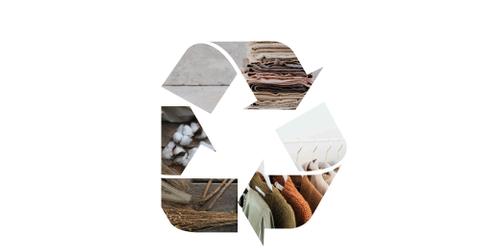
Sustainable Fashion
Fast fashion harms people and the planet. Discover how sustainable fashion and Black designers are redefining style with ethics, purpose, and creativity.
By Lettecha JohnsonOct. 27 2025, Published 2:45 p.m. ET
Sustainable fashion is more than just a buzzword or trend; it’s a necessity if we want a future for our planet. Everyone needs clothing, and because of how rapidly style can change, the industry created a production style known as fast fashion.
The quick production of cheap, low-quality clothing by retailers like H&M, Shein, and Zara generates both massive waste and significant environmental issues. Fortunately, moving away from fast fashion and towards more sustainable-focused brands and personal practices can help the planet (and your clothing budget) heal. From water and air pollution to dangerous working conditions, you may think twice about shopping from certain brands.
Fast Fashion Slows Clean Water Access
When you imagine pollution, dark smoke rising from coal factories or tailpipe exhaust on crowded freeways may come to mind. However, fast fashion is actually one of the largest global polluters.
The fallout from buying that cheap Shein dress? It might be right there in your drinking glass or bathtub.
Although the planet’s surface is 70% water, this natural resource is not infinite. The vulnerability of clean water access has been underscored not only in third-world countries but also in majority Black American populations, including Flint, Michigan; Keystone, West Virginia; and Jackson, Mississippi. Residents of these cities have to boil their water because of the contamination from poor infrastructure regulation and industrial pollution.
Sure, fast fashion companies aren’t directly associated with the Flint water crisis. However, fast fashion dyes and treatments make up as much as 20% of industrial water pollution globally. Azo dyes contribute to 70% of these industry dyes and are known carcinogens. To top it off, toxic heavy metals and formaldehyde are also present.
When these dyes leach into freshwater systems, they put those who are drinking the water at risk of endocrine disruption, which affects your hormones. This can lead to health complications such as metabolic disorders, reproductive issues, and even an increased risk of cancer.
Dumping these dyes and chemicals has killed waterways from Bangladesh to Ghana; the once beautiful Korle Lagoon has become a landfill thanks to the textile waste from microfiber runoff and direct dumping.
Cotton can also be problematic depending on use. It’s a plant, and a thirsty one at that. That single cotton shirt hanging in your closet may have taken as much as 2,700 liters of water to make. Imagine that slowly drying bed of water and the effect it will have in regions where freshwater access is miles away on foot.
Dirty Fuels for Clean Clothes?
There’s nothing like walking into a store and being instantly drawn to that bulky sweater or colorful jumper on sale. Well, that fresh outfit you just picked out may be made of the same stuff you fill your car with (unless you have an electric vehicle). Some synthetics like polyester, nylon, and acrylic are derived from petroleum, a fossil fuel.
Converting these dirty fuels into usable synthetic fabric requires a lot of energy and super high temperatures around 280°C to 300°C (536°F to 572°F). This process also releases toxic greenhouse gases like CO2, which have been linked to several respiratory and cardiovascular problems. These greenhouse gases enter the atmosphere, where they trap heat and make even more places on Earth too hot to live with longer and more intense droughts. Industry production is responsible for a whopping 10% of those global emissions.
Landfills Are Overflowing
Even if you removed clothing from the equation, the world has too much trash. Add fast fashion back in, and you have an even greater problem. At least 92 million tons of textile trash is created annually.
Like any trash, those ripped and worn garments release carbon and methane as they break down. Synthetics like polyester can take 200 years to decompose fully, but not before leaching existing chemicals and microplastics into nearby soil and water, such as Ghana’s lagoon.
Notice how some clothes already have holes in them after just a few washes? That’s no accident. It’s part of a vicious cycle in which companies produce cheap, low-quality clothing, which consumers of all budgets can easily buy and just as easily discard. Unfortunately, many of us aren’t aware of the lingering price the planet is paying.
Additionally, the landfill buildup may be partially due to a lack of a centralized system for textile recycling. While items in good condition can be donated or resold at thrift stores and online marketplaces, ripped fast fashion upcycling may require more individual work.
Here’s a start: Those old GAP and Shein clothes can be used for traditional quilt making or something simpler, like cleaning rags.
Worker Safety Is at Risk
Unpaid labor and brutality are contemptible. Sadly, a quick look into corporate and industrial practices and you’ll find that many people, some in the United States but particularly in developing countries, are still victims of underpaid and inhumane workplace treatment.
Fast fashion is one of the worst culprits.
Fast fashion companies employ over 75 million people in factories, laboring over thinly made dresses, T-shirts, and accessories coming to a mall near you. However, only 2% of these workers in countries such as India, Indonesia, and China earn a livable wage. And they often work long hours in unsafe conditions. One of the worst examples of this is the Rana Plaza factory collapse in Bangladesh, which killed over 1,000 people and injured thousands more.
By outsourcing to countries with more “flexible” or non-existent labor laws, the fast fashion industry can produce more at lightning speed. However, it often comes at the expense of its over 80% female workers. Many of these working mothers have endured sexual harassment as well as physical and verbal abuse to ensure they make quotas.
Then, there’s the wage theft occurring in already impoverished areas. For example, during the pandemic, massive factory closings suddenly laid off workers without pay for weeks or months.
Black Sustainable Brands Making a Difference
Luckily, there are upcoming and already established Black designers who understand that being eco-friendly and stylish don’t have to be mutually exclusive.
Tracy Reese swears by small batch production that uses organic cotton and includes certified inks for prints on her clothing. She also focuses on sustainability outreach and partnerships.
The Brother Vellies brand, from designer Aurora James, uses floral-dyed feathers and vegetable-tanned leather to keep traditional African design practices alive.
Taylor Jay doesn’t rely on sweatshops from abroad. The brand produces fashion with upcycled materials and non-toxic dyes from a fair-labor factory in Oakland, California.
Oakland womenswear designer, Aliya Wanek, uses small-scale production to hand-dye and construct each piece created from natural fibers.
Conclusion
The fast fashion industry doesn’t actually care about fashion. They only care about turning a profit while turning a blind eye to the cost of this. Considering the environmental damage and exploitation of workers, getting a cheap shirt that’ll last three washes isn’t worth it. Luckily, there are more sustainable options available, from small businesses to large, established designers.
Remember the sustainable-fashion power you have. Upcycle worn fabrics into bags, new shirts, tablecloths, and more. Save money by thrifting clothes that are more unique and will last longer. The less money we put into the pockets of these corporations, the more we support each other and our planet.

